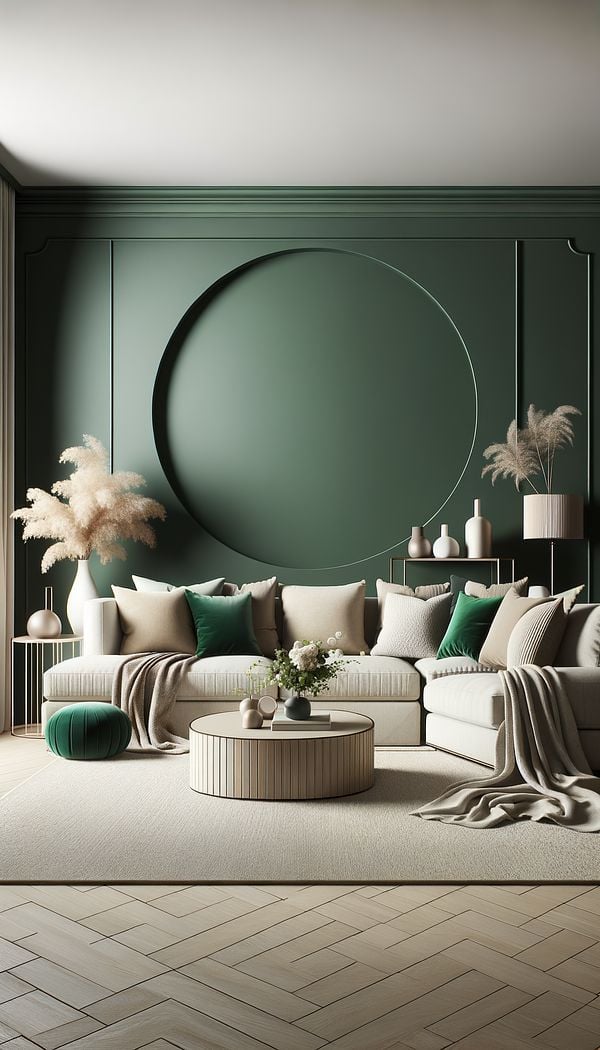What is an Accent Wall?
An accent wall is a wall that is designed to stand out from the surrounding walls in a room.
Description
An accent wall, also known as a feature wall, is one that is distinctly different from the other walls in a room, designed to become a focal point and add interest to a space. The purpose of an accent wall is not only to add aesthetic appeal but also to introduce color, texture, or material that contrasts with the other walls, thereby drawing attention and creating a visual impact in the room. This differentiation can be achieved through a variety of means, including but not limited to paint, wallpaper, textured finishes, wood or stone cladding, and art installations. An accent wall can serve multiple purposes: it can highlight architectural features, define different zones within a space, or simply inject personality and a pop of color into a room. When designing an accent wall, it's important to consider the room's overall theme and color scheme to ensure that the wall complements rather than clashes with the existing design. Additionally, the choice of wall to highlight should be deliberate; typically, it is one that naturally draws the eye, such as the wall behind a bed in a bedroom or behind a television or fireplace in a living room.
Usage
Accent walls are commonly used in residential spaces such as living rooms and bedrooms, but they can also be effective in commercial settings such as restaurants and offices. For example, a bold red accent wall in a living room can add warmth and depth, whereas a stone-clad accent wall in a reception area can impart a sense of sophistication and elegance. Accent walls can also be used to visually separate or highlight specific areas within an open-plan space.
FAQs
-
Can an accent wall be any color or material?
Yes, an accent wall can be any color, material, or texture that contrasts with the other walls. The choice depends on the desired effect and the room's overall design.
-
Do I need a professional to create an accent wall?
Not necessarily. Many accent wall projects, such as painting or applying wallpaper, can be DIY-friendly. However, for more complex installations like stone cladding, professional help may be advisable.
-
How do I choose the right wall to accent?
The right wall to accent is typically one that naturally draws attention or is a focal point in the room, such as behind a bed, sofa, or TV. Consider the room's layout and any architectural features when deciding.
-
Can accent walls go out of style?
Like any design trend, the popularity of accent walls can fluctuate. However, as long as the design reflects personal taste and complements the space, it can remain timeless.
Practical Application
When planning an accent wall, consider the ambiance you wish to create and how it will fit into your existing decor. Start by choosing a wall that can act as a focal point. Experiment with samples of paint, wallpaper, or material to see how they complement the space and lighting. Remember, an accent wall should enhance the room's aesthetic without overwhelming it.
-
Decorative Techniques322 articles
-
Color & Patterns154 articles
-
Wall Treatments & Finishes157 articles
-
FrameIn interior design, frame refers to a structural element that surrounds or supports objects such as artwork, mirrors, or doors.
-
TurningTurning refers to the process of shaping materials, particularly wood, by rotating them against a cutting tool.
-
Cross StretcherA cross stretcher is a structural element used in furniture design for added support and stability.
-
Complementary ColorsComplementary colors are pairs of colors that, when combined, cancel each other out to produce a grayscale color like white or black.
-
Asian Zen StyleAsian Zen Style is a tranquil and minimalist interior design approach influenced by the simplicity and natural elements of Zen philosophy.
